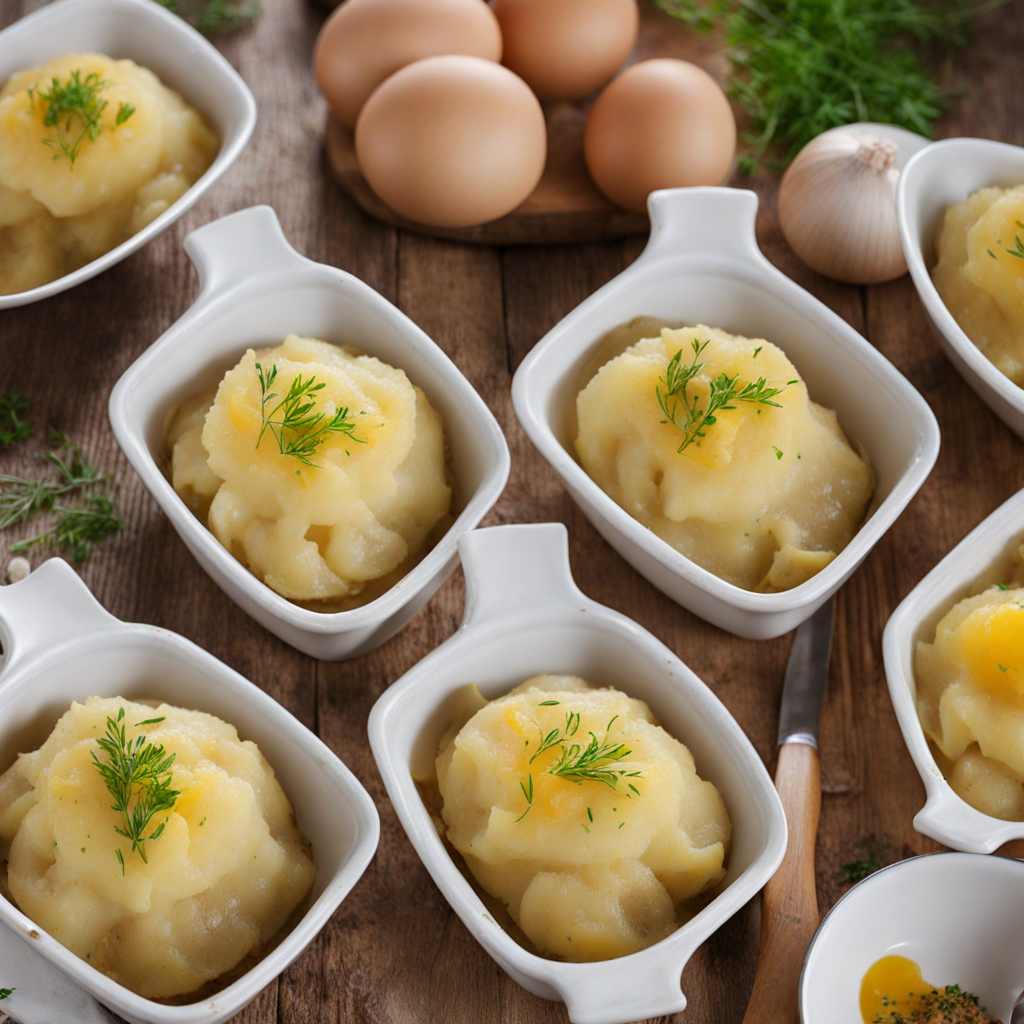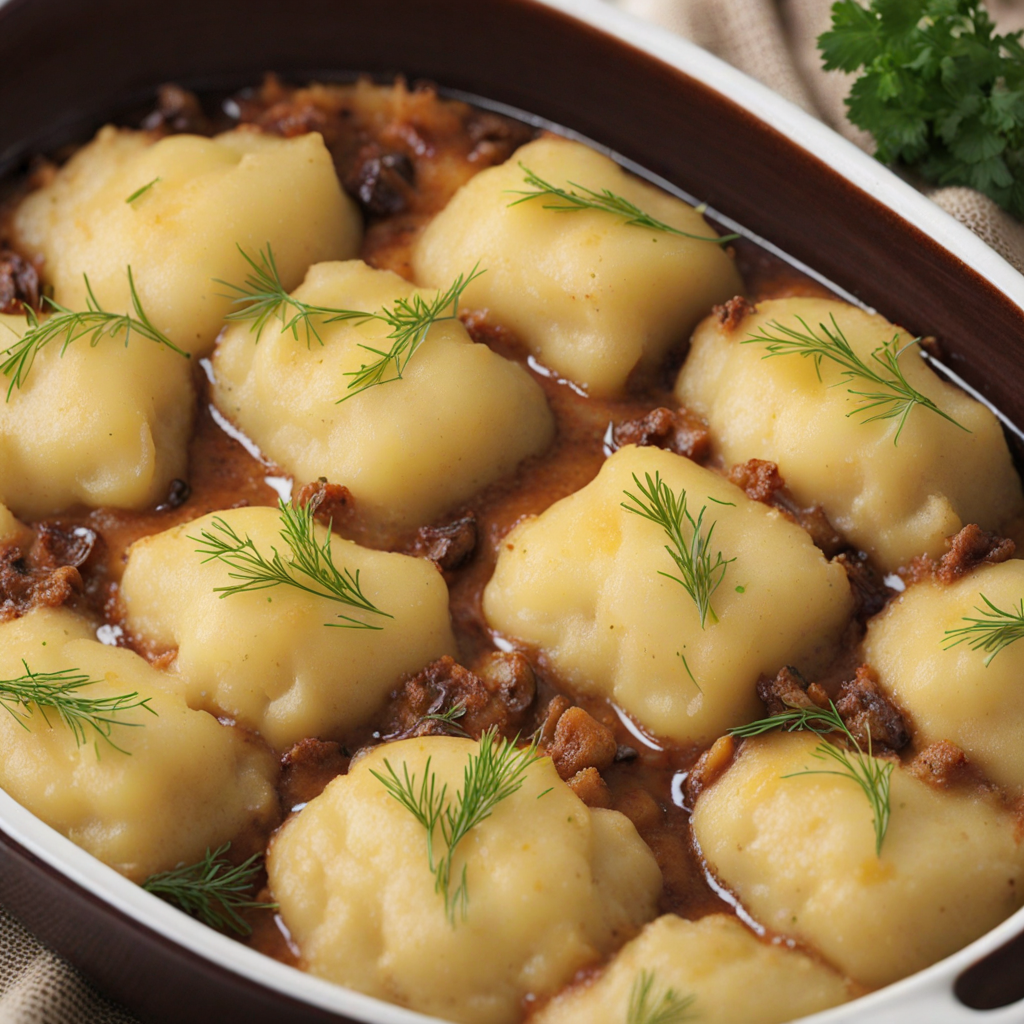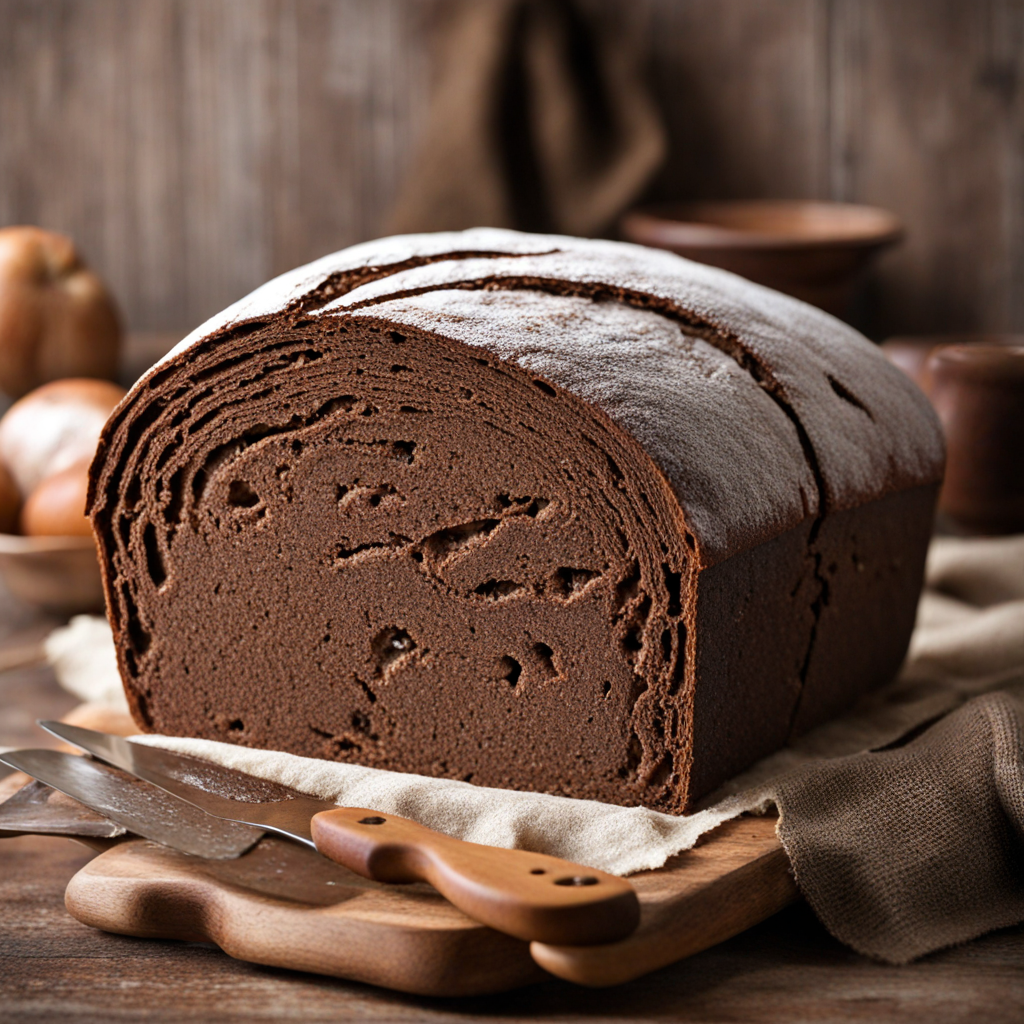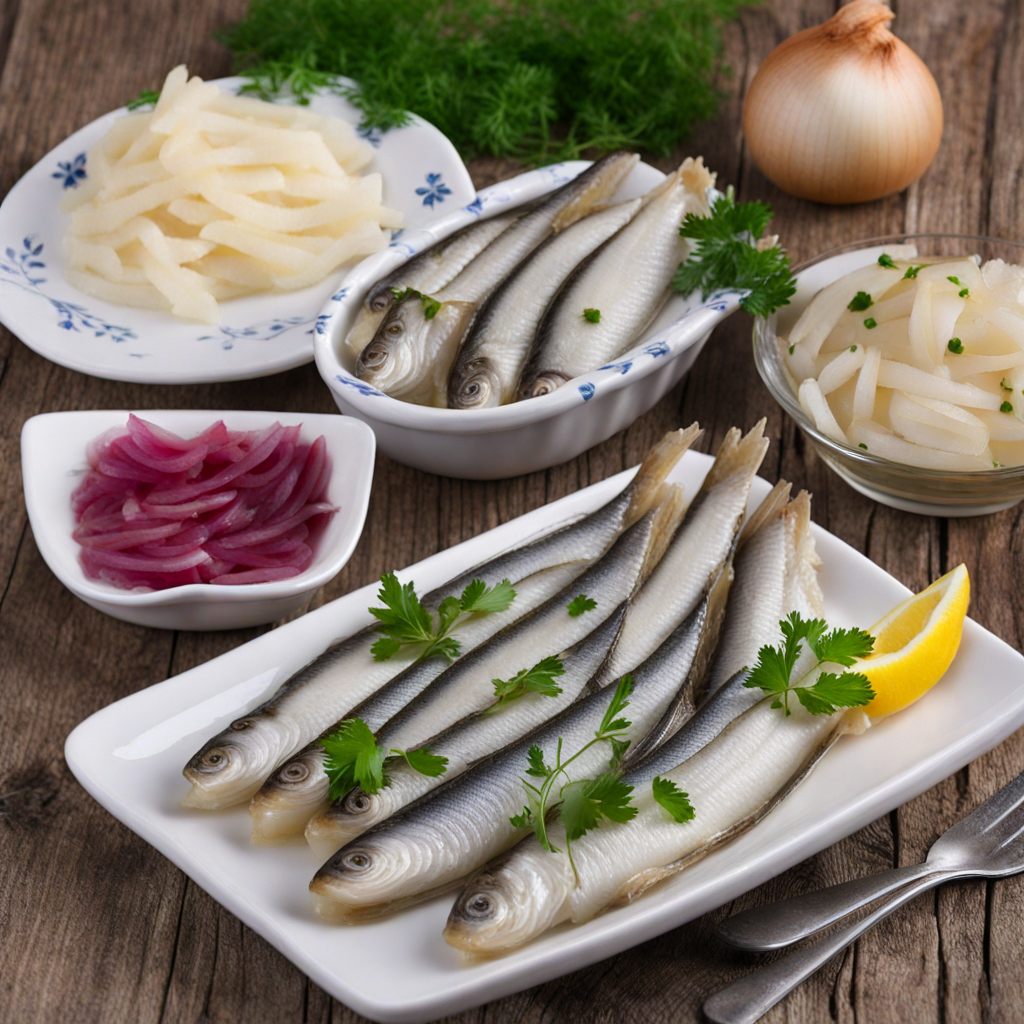Potato Dumplings
Bulvių plokštainis, also known as potato pie or potato casserole, is a traditional Lithuanian dish that showcases the country's love for potatoes, a staple ingredient in many Eastern European cuisines. This savory dish has deep roots in Lithuanian culinary heritage, reflecting the agricultural practices of the region where potatoes were cultivated extensively from the late 18th century onwards. Bulvių plokštainis is often regarded as comfort food, evoking nostalgia for home-cooked meals and family gatherings. The flavor profile of Bulvių plokštainis is rich and hearty, with a comforting blend of ingredients that meld together beautifully during cooking. The primary flavor comes from the potatoes, which offer a subtle earthiness. When baked, the exterior develops a golden-brown crust, while the interior remains soft and creamy. The addition of onions enhances the dish with a mild sweetness and savory depth, while bacon or smoked meats contribute a smoky, umami richness that elevates the overall taste. Spices like salt and pepper are typically added, and some variations may include herbs such as dill or parsley for a fresh twist. Preparation of Bulvių plokštainis involves several steps but is relatively straightforward. First, the potatoes are peeled and grated or finely chopped, depending on the desired texture. This can be done manually or with a food processor for convenience. The grated potatoes are then combined with finely chopped onions, eggs, and flour, which acts as a binding agent. The mixture
How It Became This Dish
Bulvių Plokštainis: A Culinary Journey Through Lithuanian Heritage #### Origin and Early History Bulvių plokštainis, or potato casserole, is a beloved dish in Lithuanian cuisine that embodies the agricultural abundance and culinary creativity of the region. The origins of this dish can be traced back to the 19th century, during a time when potatoes were introduced to Europe from the Americas. Initially viewed with skepticism, potatoes gradually became a staple food across the continent, particularly in Eastern Europe, where the climate and soil were conducive to their growth. Lithuania’s agrarian society embraced the potato, which quickly became an essential part of the diet. The dish itself is a reflection of the Lithuanian ethos of resourcefulness—using local, seasonal ingredients to create hearty meals that could sustain families through the long, harsh winters. Bulvių plokštainis, in its simplest form, consists of grated or finely chopped potatoes mixed with onions, eggs, and sometimes meat, which is then baked to create a comforting and filling dish. #### Cultural Significance The cultural significance of bulvių plokštainis extends far beyond mere sustenance. It is deeply intertwined with Lithuanian identity and tradition. As a communal dish often served at family gatherings and celebrations, it symbolizes togetherness and hospitality. In Lithuanian folklore, food plays a crucial role in various rituals and festivities, and bulvių plokštainis is no exception. It is commonly prepared for special occasions such as weddings, holidays, and family reunions, where it serves as a centerpiece that brings people together. Moreover, the dish reflects the agricultural practices of Lithuania, where farming has long been the backbone of the economy. The reliance on locally sourced ingredients not only emphasizes the connection between the land and the people but also highlights the importance of sustainability and seasonal eating. In a broader context, bulvių plokštainis can be viewed as a culinary expression of resilience, echoing the historical struggles and triumphs of the Lithuanian people through centuries of foreign rule and socio-political upheaval. #### Development Over Time As time progressed, bulvių plokštainis evolved, adapting to changes in society, culinary trends, and available ingredients. During the interwar period in the early 20th century, Lithuania experienced a cultural renaissance that included a revival of traditional foods. The dish began to be featured more prominently in Lithuanian cookbooks and became a symbol of national pride during a time when the country was asserting its independence and cultural identity. In the post-World War II era, when Lithuania was under Soviet rule, bulvių plokštainis took on new significance. The dish became a staple in communal kitchens and was often prepared in large quantities to feed families and friends. The economic constraints of the time led to creative adaptations of the recipe, with cooks incorporating whatever ingredients were available, such as cabbage or mushrooms, which added unique flavors and textures to the dish. This adaptability has remained a hallmark of bulvių plokštainis, as contemporary cooks continue to innovate while honoring traditional methods. In recent years, there has been a resurgence of interest in traditional Lithuanian cuisine, spurred by a growing awareness of culinary heritage and local food movements. Chefs and home cooks alike have begun to experiment with bulvių plokštainis, incorporating modern techniques such as sous-vide cooking or exploring international flavor profiles. For instance, variations may include the addition of cheeses, herbs, or spices that reflect Lithuania’s diverse culinary influences, while still maintaining the essence of the original dish. #### Contemporary Variations and Global Influence Today, bulvių plokštainis can be found in many Lithuanian restaurants, both in Lithuania and among the diaspora in countries like the United States, Canada, and the United Kingdom, where Lithuanian communities have settled. The dish serves not only as a nostalgic reminder of home for immigrants but also as an introduction to Lithuanian culture for those unfamiliar with it. Contemporary variations of bulvių plokštainis have also emerged, showcasing the versatility of the dish. Some chefs experiment with gluten-free or vegan versions, using alternative binders and incorporating ingredients like lentils or quinoa to create a more health-conscious option. Others might present it as a gourmet offering, serving it with a side of fancy sauces or garnishes that elevate the rustic casserole to a refined culinary experience. #### The Future of Bulvių Plokštainis As Lithuania continues to navigate the complexities of a globalized world, bulvių plokštainis remains a potent symbol of national identity. The dish represents a connection to the past while allowing for innovation that embraces the present and future. In a world where culinary traditions can often be lost or diluted, bulvių plokštainis stands as a testament to the resilience and adaptability of Lithuanian culture. The future of bulvių plokštainis will likely see further exploration of its roots and branches. With the rise of social media and food blogging, traditional recipes are being shared and celebrated in new ways, fostering a sense of community among those who cherish Lithuanian cuisine. Food festivals, cooking classes, and cultural events are increasingly focusing on traditional dishes like bulvių plokštainis, ensuring that the history and significance of the dish are passed down to future generations. #### Conclusion In conclusion, bulvių plokštainis is more than just a potato casserole; it is a culinary narrative that encapsulates the heart and soul of Lithuania. From its humble beginnings to its status as a cherished dish in contemporary cuisine, bulvių plokštainis embodies the spirit of resilience, community, and cultural pride. As Lithuania continues to evolve, so too will this iconic dish, bridging the past with the present and ensuring that it remains an integral part of Lithuanian life for generations to come.
You may like
Discover local flavors from Lithuania







